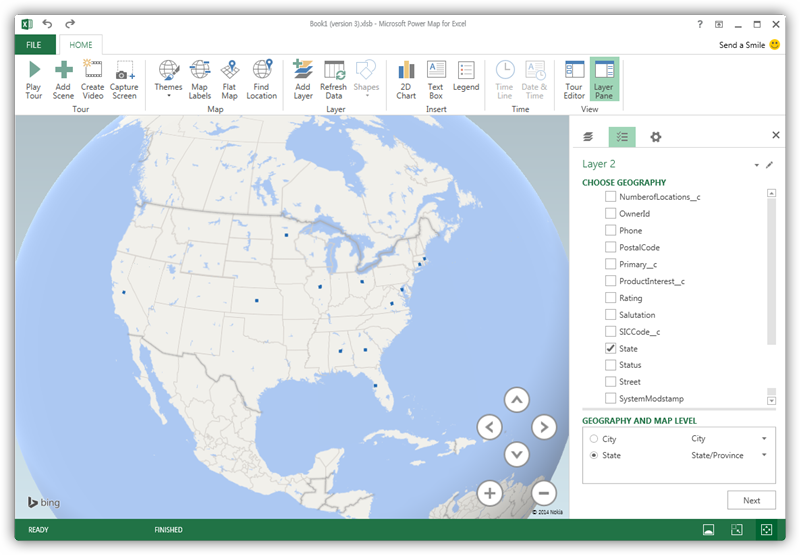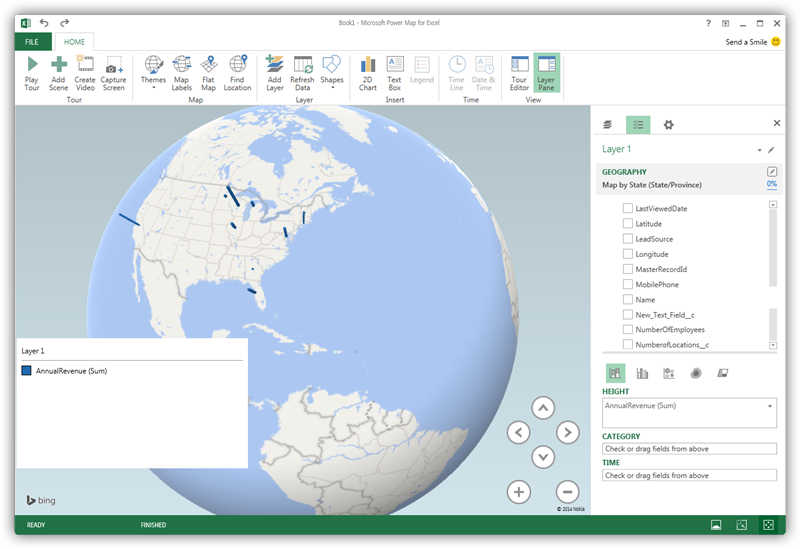Model Context Protocol (MCP) finally gives AI models a way to access the business data needed to make them really useful at work. CData MCP Servers have the depth and performance to make sure AI has access to all of the answers.
Try them now for free →Explore Geographical Relationships in Salesloft Data with Power Map
Create data visualizations with Salesloft data in Power Map.
The CData ODBC Driver for Salesloft is easy to set up and use with self-service analytics solutions like Power BI: Microsoft Excel provides built-in support for the ODBC standard. This article shows how to load the current Salesloft data into Excel and start generating location-based insights on Salesloft data in Power Map.
Create an ODBC Data Source for Salesloft
If you have not already, first specify connection properties in an ODBC DSN (data source name). This is the last step of the driver installation. You can use the Microsoft ODBC Data Source Administrator to create and configure ODBC DSNs.
SalesLoft authenticates using the OAuth authentication standard or an API Key. OAuth requires the authenticating user to interact with SalesLoft using the browser.Using OAuth
For OAuth authentication, create an OAuth app to obtain the OAuthClientId, OAuthClientSecret, and CallbackURL connection properties. See the OAuth section in the Help documentation for an authentication guide.Using APIKey
Alternatively, you can authenticate with an APIKey. Provision an API key from the SalesLoft user interface: https://accounts.salesloft.com/oauth/applications/. You will receive a Key which will be used when issuing requests.
When you configure the DSN, you may also want to set the Max Rows connection property. This will limit the number of rows returned, which is especially helpful for improving performance when designing reports and visualizations.
When you configure the DSN, you may also want to set the Max Rows connection property. This will limit the number of rows returned, which is especially helpful for improving performance when designing reports and visualizations.
Import Salesloft Data into Excel
You can import data into Power Map either from an Excel spreadsheet or from Power Pivot. For a step-by-step guide to use either method to import Salesloft data, see the "Using the ODBC Driver" section in the help documentation.
Geocode Salesloft Data
After importing the Salesloft data into an Excel spreadsheet or into PowerPivot, you can drag and drop Salesloft entities in Power Map. To open Power Map, click any cell in the spreadsheet and click Insert -> Map.
In the Choose Geography menu, Power Map detects the columns that have geographic information. In the Geography and Map Level menu in the Layer Pane, you can select the columns you want to work with. Power Map then plots the data. A dot represents a record that has this value. When you have selected the geographic columns you want, click Next.

Select Measures and Categories
You can then simply select columns: Measures and categories are automatically detected. The available chart types are Stacked Column, Clustered Column, Bubble, Heat Map, and Region.


